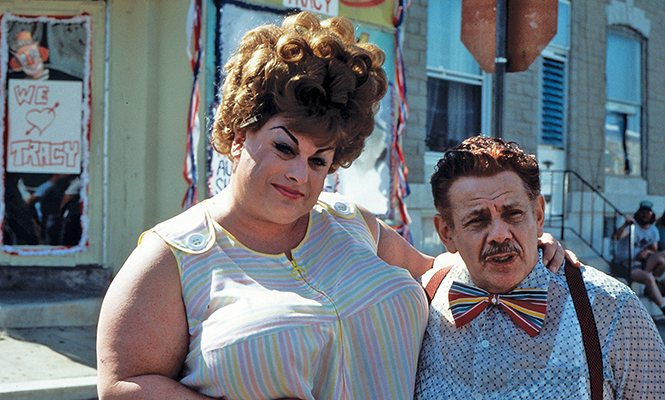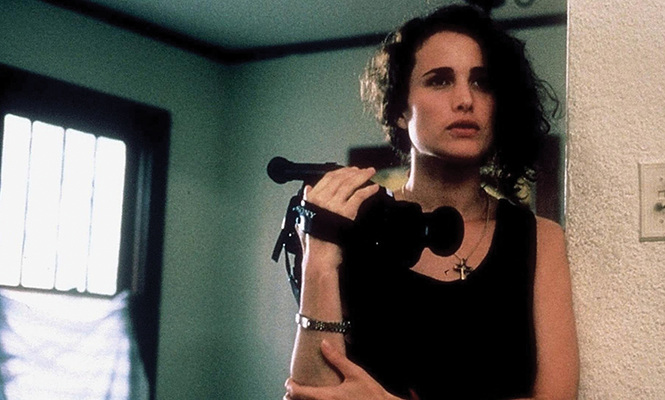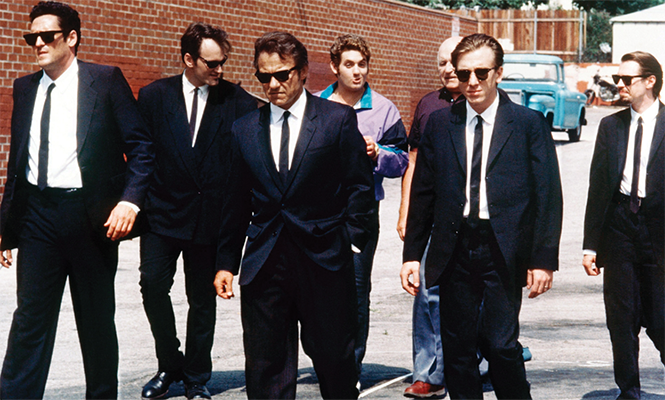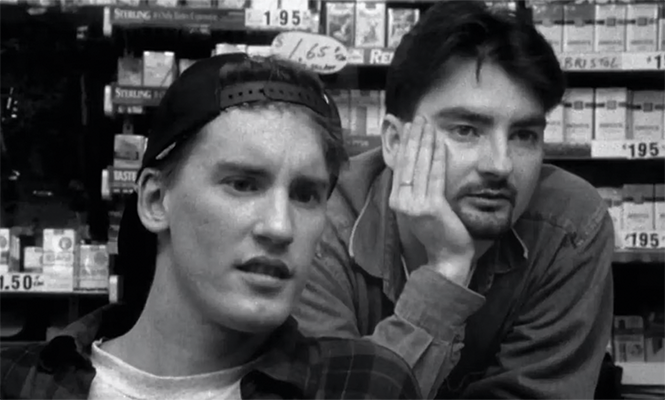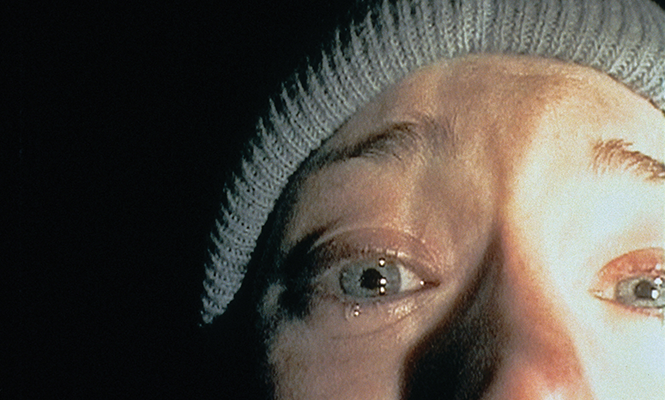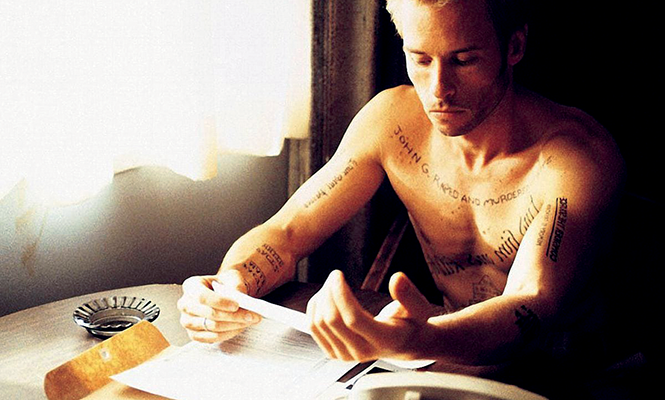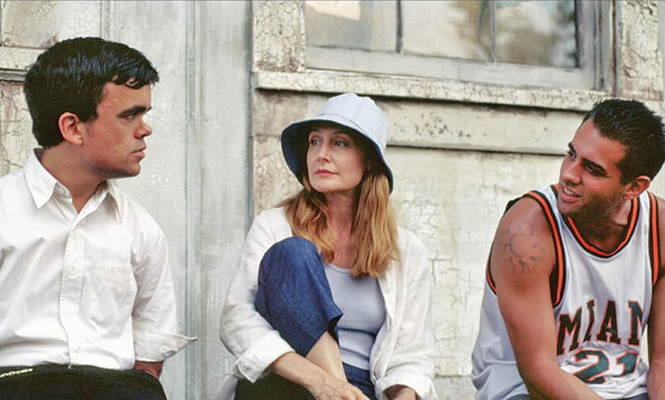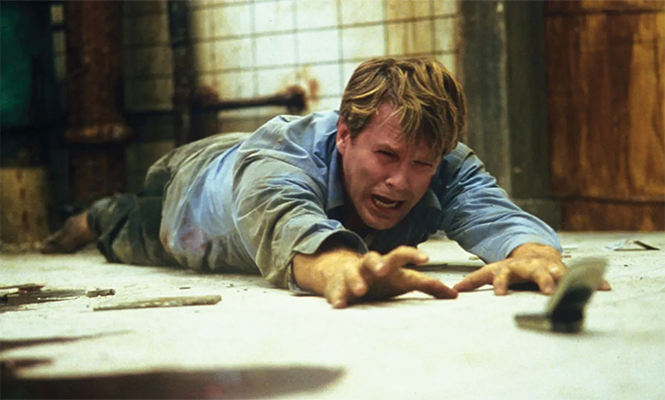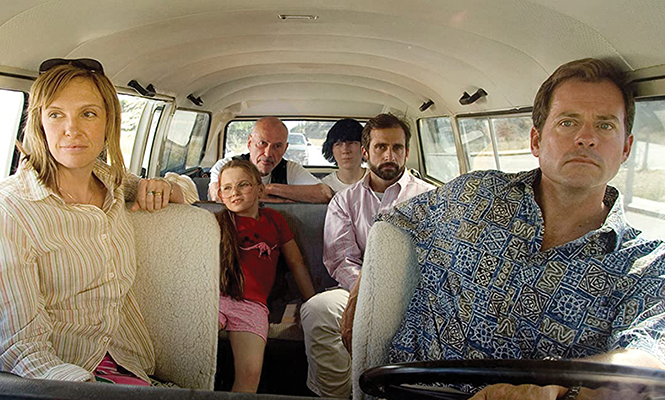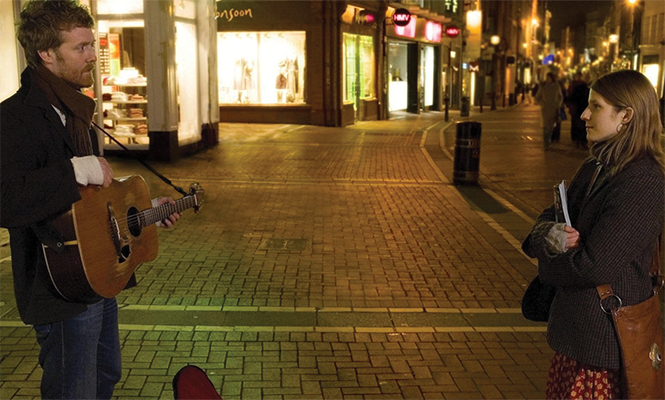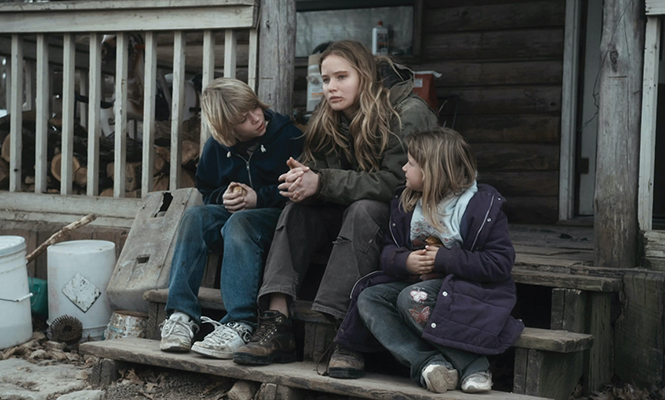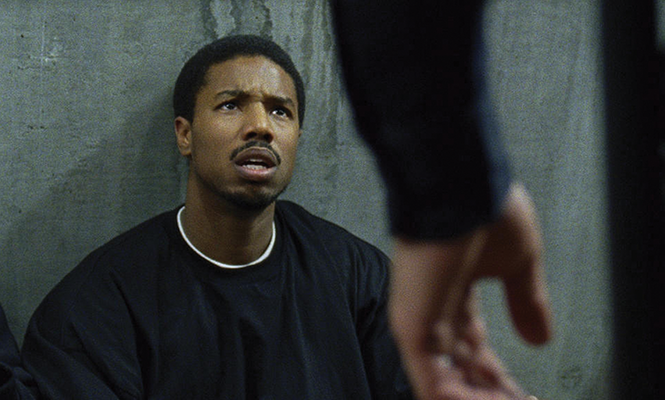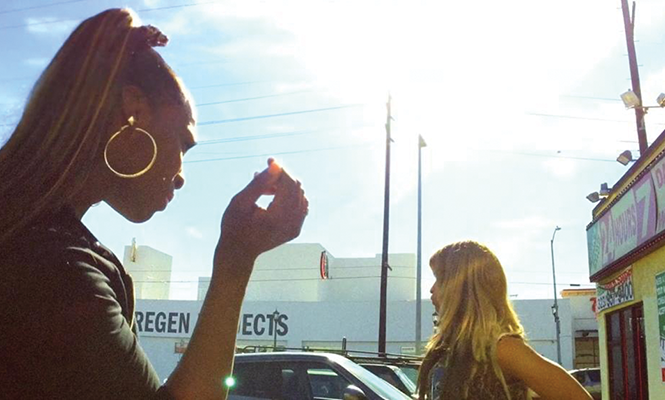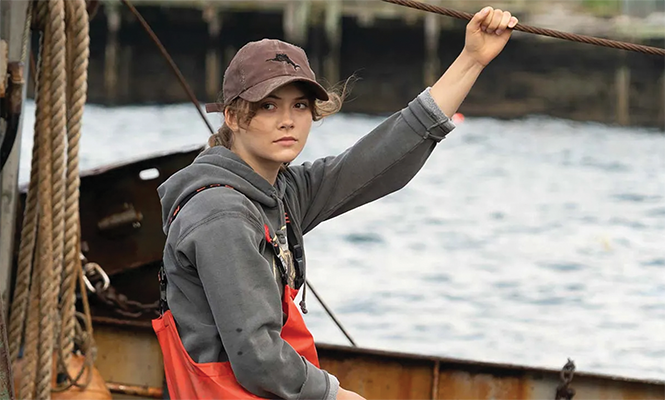Sundance Film Festival celebrates four decades of groundbreaking independent film
40 for 40
By Scott Renshaw @scottrenshawThey say that 50 is the new 40, and perhaps that notion applies to the Sundance Film Festival: It's reached a milestone age but still seems pretty frisky—and not remotely over the hill.
The intervening four decades have seen the Utah-based celebration once known as the U.S. Film & Video Festival become a cultural phenomenon, providing a kick-start for the American independent film industry and launching innumerable careers in front of and behind the camera.
As part of our celebration of the 40th Sundance Film Festival—running from Jan. 18 to Jan. 28—we thought it would be fun to look back and pick a film that defined previous festival installments. There are arguments to be made for and against each pick as representative, but if nothing else, it's a reminder of how much contemporary cinema has been influenced by what happens in Park City every January.
1985: Blood Simple
The first festival under the Sundance banner hadn't yet achieved the cachet where it could expect all world-premieres; this nasty little film noir from a pair of first-time filmmaking brothers named Joel and Ethan Coen actually made its debut the previous fall at the New York Film Festival. It did, however, end up winning the Dramatic Grand Jury Prize, providing a boost for the Coens as they subsequently built one of the most critically acclaimed bodies of work of the past 40 years.
1986: Desert Hearts
In the mid-1980s, the idea of a "queer cinema" still wasn't all that easy to imagine. Director Donna Deitch and screenwriter Natalie Cooper's adaptation of a 1964 novel—about the romantic relationship between a soon-to-be divorced professor and a Reno casino worker—was one of the first stories about a lesbian relationship that didn't sensationalize its subject matter, earning a Sundance Special Jury Prize in the process.
1987: River's Edge
Technically, this film launched the previous fall at the Toronto Film Festival, but it certainly exemplified the Sundance spirit in its psychologically complex story of a group of California teens dealing with the revelation that one of their friends has murdered his girlfriend. Director Tim Hunter went on to direct episodes of the legendary Twin Peaks, and the casting provided showcases for then-unfamiliar faces like Keanu Reeves and Ione Skye.
1988: Hairspray
John Waters was certainly known to some in cult-film circles for his features Pink Flamingos and Polyester, but made his way into the sort-of-mainstream with a lively comedy about 1960s teenagers fighting against racial segregation. Its pop-culture footprint has been a long one, including the subsequent development of a popular stage musical adaptation and a later film version of that musical.
1989: sex, lies and videotape
We could haggle over when exactly Sundance became a brand name, but I'll put my money on the emergence of Steven Soderbergh's debut feature, a psychological drama about ... well, what the title says. It rode the buzz out of Sundance to a Palme d'Or win at that year's Cannes Film Festival, and then an Oscar nomination for Soderbergh's original screenplay.
1990: Longtime Companion
One of the tougher calls, since this year included feature debuts from the likes of Hal Hartley, Reginald Hudlin and Whit Stillman. But director Norman René's chronicle of a group of gay men in the 1980s brought the AIDS epidemic to a wider audience, and featured a sensational Oscar-nominated performance by Bruce Davison.
1991: Paris Is Burning
Americans are still apparently unsure how to handle the concept of drag and gender nonconformity. But more than 30 years ago, Jennie Livingston's groundbreaking documentary film peeked into the world of New York "house" culture, vogueing and an entire subculture of gay people of color most of the world had no idea existed. Subsequent support from Roger Ebert and Gene Siskel helped boost the profile of this fascinating feature.
1992: Reservoir Dogs
The Sundance jury wasn't quite ready for the combination of jagged tough-guy banter and shocking violence that would turn Quentin Tarantino into a cinematic adjective inspiring dozens of copycats. This story of a bank heist gone wrong still launched the career of one of the most influential filmmakers of the 1990s, setting the stage for the electrifying follow-up of Pulp Fiction.
1993: El Mariachi
The legend of how writer/director Robert Rodriguez got this film made—getting paid to participate in medical experiments to raise the $7,000 budget—is almost as famous as the film itself, which ultimately made more than $1 million at the box office. Rodgriguez subsequently turned the story of a guitar-case-wielding gunman into a mini-franchise, and has built much of his career on innovative, DIY approaches to features like his popular Spy Kids movies.
1994: Clerks
Before he was a ubiquitous pop-culture personality, Kevin Smith was just a guy from New Jersey looking to make an episodic comedy about feeling lost in a mundane job at a convenience store. Its $27,000 budget turned into $4 million at the U.S. box office, and launched a long life in several sequels for the characters of Jay (Jason Mewes) and Silent Bob (Smith).
1995: The Usual Suspects
Not gonna lie, folks: There are a couple of big reasons why this movie hasn't aged particularly well, namely the allegations of sexual misconduct that effectively ended the careers of director Bryan Singer and co-star Kevin Spacey. But it's impossible to deny what a sensation it was at the time as one of those "don't you dare spoil the ending" indie hits, largely thanks the inventive (and Oscar-winning) screenplay by Christopher McQuarrie, who would eventually take over the Mission: Impossible franchise.
1996: Paradise Lost: The Child Murders at Robin Hood Hills
Documentary filmmakers Joe Berlinger and Bruce Sinofsky explored a controversial case involving three young men convicted of murder, perhaps because their conservative community believed they were devil-worshippers. The film itself was fascinating as both procedural and character study, and not only yielded two equally gripping follow-up films—2000's Paradise Lost 2: Revelations and 2011's Paradise Lost 3: Purgatory—but likely lit the fire that ultimately led to the release of the "West Memphis Three."
1997: In the Company of Men
A Brigham Young University alum playwright named Neil LaBute adapted one of his student films into this psychological drama about a pair of co-workers who form an alliance to seduce (and emotionally destroy) a Deaf female subordinate. The screenplay subsequently won an Indie Spirit Award, and the film also introduced in the lead role a young former BYU classmate of LaBute's—Aaron Eckhart, who has gone on to a marquee Hollywood career.
1998: Smoke Signals
Sundance's long history of supporting Indigenous voices includes this winner of a festival Filmmaker's Trophy, with director Chris Eyre and screenwriter Sherman Alexie adapting Alexie's short-story collection about life on Idaho's Coeur d'Alene Reservation. It also provided a boost in visibility for young actor Adam Beach, who would subsequently get noteworthy roles in HBO's Big Love, the film Suicide Squad and more.
1999: The Blair Witch Project
The more time passes, the more improbable it seems as a pop-culture phenomenon. This micro-budget horror film introduced most audiences to the low-tech "found footage" format, with an enigmatic ending that left as many viewers angry as jittery with terror. But by creating a rich mythology around a possible supernatural presence in the Maryland woods, and three student filmmakers whose attempt to chronicle that mythology turns into a nightmare, filmmakers Daniel Myrick and Eduardo Sanchez provided a template for "viral marketing" before anyone had ever heard of the term, creating a box-office smash in the process.
2000: You Can Count on Me
Playwright Kenneth Lonergan made his feature film writer/director debut with this unassuming drama about adult siblings Sammy (Laura Linney) and Terry (Mark Ruffalo), orphaned in their childhood, trying to navigate their differing life paths. In addition to landing a couple of Oscar nominations (for Lonergan's original screenplay and for lead actress Linney), You Can Count on Me also notably provided the first breakout role for Ruffalo as the often-troubled Terry.
2001: Memento
Sundance wasn't actually the Park City-based film festival that first showed director Christopher Nolan's work—that would be Slamdance, which programmed Nolan's 1999 debut feature Following—but this psychological thriller certainly provided a coming-out party. Its twisty-turny plot involving a man with short-term amnesia (Guy Pearce) underlined the complexity of Nolan's storytelling, and the original screenplay (written with his brother Jonathan) became his first Oscar nomination. Over the next two decades, he would make some of the most critically and financially successful American movies of their time.
2002: Better Luck Tomorrow
The studious, straight-arrow stereotype of Asian-American students got a terrific skewering in this edgy thriller about a group of Southern California friends who start dabbling in criminal activity. Director Justin Lin used the critical success of Better Luck Tomorrow as a launching pad onto the Hollywood directing A-list, including several entries in the Fast & Furious series.
2003: The Station Agent
It's the kind of story that almost feels stereotypically Sundance-y, with its quirky relationships and oddball premise, involving a man with dwarfism heading to an inherited abandoned train depot to escape the world. But it provided an unexpected leading role for Peter Dinklage, who has subsequently become an acclaimed, award-winning actor. And not for nothing, it was also character actor Tom McCarthy's first feature effort behind the camera—and he would go on to direct the Best Picture-winning Spotlight.
2004: Saw
Twenty years later, they're still digging into new stories about the moralist serial torturer known as Jigsaw. Director James Wan and co-writer Leigh Whannell fashioned a captivating premise—people set up in elaborate Rube Goldberg contraptions as punishment for their sins, with a killer who technically doesn't really kill anyone. After multiple sequels, the franchise continues, and Wan has gone on to a successful directing career including entries in the Fast & Furious, The Conjuring and Aquaman franchises.
2005: The Puffy Chair
It's a bit of an obscure choice, especially in a year that also included Brick (the feature debut of future The Last Jedi/Knives Out auteur Rian Johnson) and Junebug (which marked the first Oscar nomination for Amy Adams). But brothers Mark and Jay Duplass—who had borrowed money from their parents to make their shaggily comedic road movie—staked out their unique sensibility in the "mumblecore" movement, and went on to found a successful production company for both for their own projects and a new generation of indie creators.
2006: Little Miss Sunshine
If you were there in the audience for the premiere screening of Jonathan Dayton and Valerie Faris' comedy—about a dysfunctional family road-tripping cross-country to get their young daughter to the finals of a beauty pageant—you knew it was going to be a hit with audiences. Fox Searchlight's $10.5 million acquisition deal brought Little Miss Sunshine out into theaters, where it earned more than $100 million worldwide and four Oscar nominations, including wins for Supporting Actor (Alan Arkin) and Original Screenplay (Michael Arndt).
2007: Once
It wasn't the most likely candidate to be a breakout hit, considering it was by a director, John Carney, better known for his career as a musician, and it starred two other musicians, Glen Hansard and Markéta Irglová. But the gentle, Dublin-set story about two lonely souls connecting through song was a revelation, and the centerpiece love ballad "Falling Slowly" went on to earn a Best Original Song Academy Award. The story subsequently became the book for a Broadway musical adaptation, expanding the audience for this wistful drama.
2008: In Bruges
Martin McDonagh took his unique sensibility from stage to screen for this hilariously tart-tongued story of two professional killers (Brendan Gleeson and Colin Farrell) laying low in Bruges, Belgium, while their employer tries to clean up the mess of a hit gone wrong. McDonagh's original screenplay went on to earn an Oscar nomination, and the creative partnership between filmmaker and two co-stars would be re-kindled when they reunited for the critically acclaimed The Banshees of Inisherin.
2009: Precious: Based on the Novel 'Push' By Sapphire
Funny story: It debuted at Sundance under the title Push, which then had to be changed to avoid confusion with a sci-fi super-power movie of the same name. That didn't have any effect on the long-term success of director Lee Daniels' adaptation of the story about a Black teenager trying to overcome poverty, illiteracy and abuse, as it made its way into that year's Oscar race with four nominations, and it scored wins for the adapted screenplay and for Mo'Nique's Best Supporting Actress performance.
2010: Winter's Bone
To be clear, Winter's Bone didn't technically "introduce" Jennifer Lawrence, who had been building a résumé including a teenage stint on the Bill Engvall Show. But Debra Granik's terrific adaptation of Daniel Woodrell's novel gave the then-20-year-old Lawrence a showcase role as Ree, who tries to save the family home when her ne'er-do-well father disappears while out on bail. The makings of a star were immediately evident, as Lawrence's performance landed her the first of many Oscar nominations to come.
2011: Marcel the Shell With Shoes On
You could create an entire list out of Sundance short films that became calling cards for later features, or which otherwise heralded future filmmaking greatness. The stop-motion short film involving a talking googly-eyed shell, created by then-real-life couple Dean Fleischer-Camp and Jenny Slate, introduced the charming character who would go on to headline an Oscar-nominated 2021 feature—one in which the original short film played a key role as a driver of the plot.
2012: Beasts of the Southern Wild
A singular work that somehow mixed fantasy with edgy realism, this adaptation of a Lucy Alibar play by Alibar and director Benh Zeitlin explored a Louisiana bayou community through the eyes of 6-year-old Hushpuppy, magnificently played by Quvenzhané Wallis. Wallis went on to become the youngest-ever nominee for a Best Actress Oscar, while the film was also nominated for Best Picture, Best Director and Best Adapted Screenplay.
2013: Fruitvale Station
It's one of the toughest years to narrow down a single choice, since it also included the Oscar-winning documentary 20 Feet from Stardom and the debate-setting documentary Blackfish. But an undeniable legacy emerged from this dramatization of the final hours in the life of Oscar Grant III (Michael B. Jordan), who was killed by police in a Bay Area transit station on New Year's day 2009. Jordan's charismatic performance brought him to subsequent stardom working with director Ryan Coogler on Black Panther and Creed, and Coogler's Black Panther remains the biggest box-office hit ever by a Black director.
2014: Whiplash
Here's one of those "alumni twice over" cases, since the year before, it appeared in the form of an 18-minute short. The feature version of that story—involving a jazz drumming student and his relationship with a brutally strict conductor of the program's studio band—went on to earn three Academy Awards, including J.K. Simmons' Supporting Actor Oscar as the teacher. It also marked the feature debut of writer/director Damien Chazelle, who just two years later would become the youngest-ever Best Director Oscar-winner, for La La Land.
2015: Tangerine
Other features from this year might have made more of an impression financially, and the documentary How to Dance in Ohio even inspired a Broadway musical. But Sean Baker's feature about the life and loves of a transgender sex worker made a splash not just because of its strong performances and the sensitivity with which Baker handled his subject, but for the fact that it was shot entirely on iPhones, marking yet another example of indie film knocking down barriers to entry. Baker subsequently went on to make the acclaimed The Florida Project.
2016: The Birth of a Nation
Here's a rare example in this list of a movie that provides more of a cautionary tale, but it was unquestionably the story that dominated that year's festival. Co-writer/director Nate Parker's dramatization of the 1831 Nat Turner slave rebellion audaciously appropriated the title of D. W. Griffith's infamous love letter to the KKK, and the film seemed on its way to awards glory after a massive distribution deal. Then stories re-emerged about Parker's involvement in an alleged sexual assault and alleged harassment of the woman who made the claim, and who ultimately died by suicide. The controversy effectively ended the movie's hopes for mainstream success.
2017: Call Me by Your Name
Director Luca Guadagnino's adaptation of André Aciman's novel was likely to be provocative, considering it involves an affair between an adult man and a 17-year-old, as well as a rather memorable consumption of a peach. The melancholy drama did strike a chord, however, earning an Academy Award for Adapted Screenplay by the legendary James Ivory, as well as a Best Actor nomination for its young star, a fellow named Timothée Chalamet who would go on to have some small amount of success in Hollywood.
2018: Hereditary
Here's a rare case of a Sundance movie that was also shot in Park City, as director Ari Aster used the mountain environment to add to the atmosphere in his creepy tale of a family dealing with tragedy and a dark family legacy. At the time, it became the most successful theatrical release ever for A24 films, and launched Aster's career as one of the most original American directors of creepy cinema.
2019: American Factory
Sundance has always been at the forefront of nonfiction film, to the point that seven of the past 11 Academy Award winners for Best Documentary feature have been Sundance premieres. Coming in the middle of that stretch was this fascinating fly-on-the-wall study of a Chinese company opening a factory on the site of a shuttered General Motors plant in Ohio, permitting a remarkable story of culture clash between economic superpowers.
2020: Minari
Lee Isaac Chung's family drama landed both the Grand Jury Prize and Audience Award with its sensitive perspective on the immigrant experience of the "American Dream." Its success extended into Oscar season, with six nominations including Best Picture, and a Supporting Actress win for Youn Yuh-jung as the Korean matriarch adapting to American life.
2021: CODA
Sundance's first COVID year produced a pair of Oscar-winners: Best Documentary Summer of Soul and this drama, which became the first-ever Sundance premiere to take Best Picture. Writer/director Siân Heder's story of a young woman navigating her responsibilities to her Deaf parents was a bona fide crowd-pleaser that emerged in a year with little opportunity to play for crowds, and also landed a Best Supporting Actor Oscar for Troy Kotsur.
2022: Navalny
Daniel Roher's documentary profile of the Russian opposition leader took the form of a real-life detective story, exploring not just the life of Alexander Navalny but the circumstances surrounding his near-death from exposure to a nerve agent in 2020. It was one of the year's most extraordinary movie sequences in which a prank phone call effectively exposed proof of an assassination attempt by a world leader.
2023: 20 Days in Mariupol
In a remarkable example of a documentary capturing a moment we're still in the middle of, Mstyslav Chernov's chronicle of the early days of the 2022 Russian invasion of Ukraine, focused on the city of Mariupol. Beyond the urgency of the you-are-there wartime footage, it offered direct contradiction of propaganda campaigns, while also yielding evidence for the essential role of battlefield journalism.
2024:
Well now, we don't know yet what this one will be, do we? That's why so many of us get excited for it every year: You never know what discovery will change the world of filmmaking forever.
More by Scott Renshaw
-
Film Reviews: New Releases for May 2-3
The Fall Guy, The Idea of You, Turtles All the Way Down, The People's Joker and more
- May 2, 2024
-
New film reviews and May special screenings
Music May, Napoleon Dynamite 20th anniversary, Cary Elwes talks Princess Bride and more
- May 1, 2024
-
Film Reviews: New Releases for April 26
Challengers, Boy Kills World, Humane, Alien 45th anniversary
- Apr 25, 2024
- More »
Latest in Cover Story
Readers also liked…
-
Forget the family pedigree—Robert F. Kennedy Jr should not be the next president of the United States
Trojan Horse
- Jun 21, 2023
-
Women decry harassment and toxic culture at St. George auto dealership
Men at Work
- Oct 11, 2023



